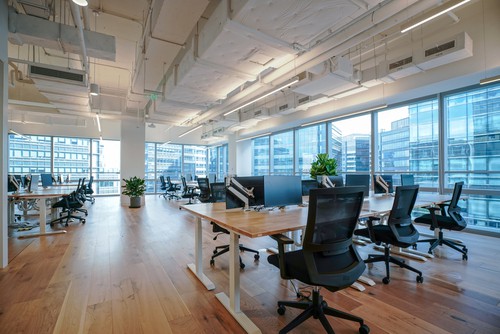
Pros And Cons On The Most Popular Flooring Options For Office – The office floor can say a lot about your company’s priorities and vision and affect how well your employees work.
Whether you’re still designing or renovating your office space or want to ensure that your current flooring meets modern-day standards, here’s an overview of the different types of available flooring and their specific pros and cons.
The most popular types of flooring include carpet, ceramic tile, vinyl, laminate, and rubber surfaces; each type has unique properties that may be better suited to your needs than others. Read on!
Table of Contents
Pros And Cons On The Most Popular Flooring Options For Office
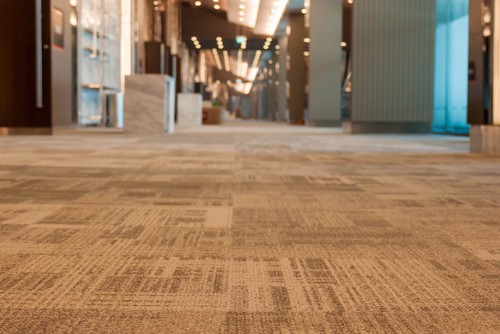
Carpet
Carpets are one of the most widely used flooring options in both home and office settings. They are highly preferred over other flooring types due to their immense insulation, which reduces the sound while keeping the office temperatures in control.
In addition, carpets are available in diverse colors and patterns, which help create a welcoming atmosphere for your employees and customers. Furthermore, they add a level of comfort that cannot be attained with tile or wood.
Like any other flooring type, carpets have downsides, which you must consider before installing. One of the main drawbacks of carpets is that they require routine cleaning and vacuuming to maintain their original look and feel.
If proper care is not provided, it can result in staining or wearing down the carpet, leading to costly repairs. Moreover, some rugs may be harder to clean if they have intricate designs or profound pile heights.
Overall, carpet flooring is an excellent choice for an office setting if you want something comfortable and inviting. However, regular maintenance will be required to keep it looking great.
Hardwood
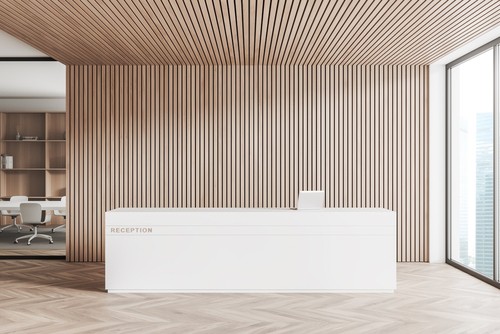
This is another popular flooring option for office environments, as it offers a classic and timeless look that never goes out of style. It’s more suitable for working spaces subject to high traffic due to its long-lasting qualities.
Hardwood is easy to maintain, durable, and offers employees and customers a warm and inviting atmosphere.
Another significant benefit of installing hardwood floors in your office space is that they are easy to clean and require little maintenance. Sweeping and vacuuming regularly is enough to keep your foot looking great. Plus, they can be refinished over time; therefore, if your office space has endured excessive wear and tear, it can be quickly restored to its original look.
On the flip side, hardwood floors can be pretty expensive compared to other types of flooring, and installation costs can add up quickly. Hardwood can also be damaged by moisture, so it’s essential to be careful when cleaning the floors or using water near them.
In summary, hardwood flooring is a timeless classic that adds beauty and elegance to any office. However, it can be expensive to install and prone to damage from moisture.
Laminate
This flooring option is easy to install and relatively affordable compared to other types of flooring. It’s widely used in most workspaces due to its cost-effectiveness. It provides a hard-wearing and durable surface, making it an excellent option for busy office spaces.
One downside to laminate flooring is that it is not as comfortable as other types of flooring, such as carpets or hardwood. It can also be more challenging to clean if dirt or dust gets trapped between the boards. Ultimately, some people may find the glossy finish of laminate too shiny for an office environment.
Vinyl
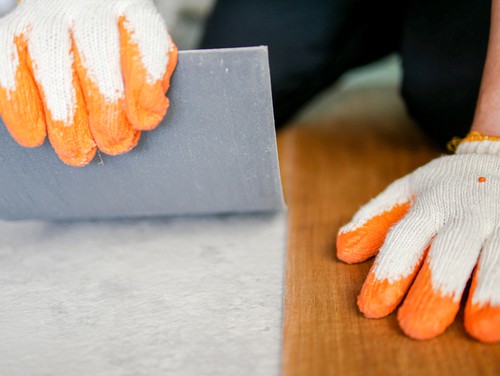
Vinyl is one of the leading flooring options for office space, thanks to its durability, cost-effectiveness, ease of maintenance, and ability to withstand heavy foot traffic. It comes in various colors, styles, and textures, making it easy to find the perfect look for your office.
The only downside to vinyl flooring is that it doesn’t offer much in the way of insulation. This makes it a less ideal choice for areas exposed to temperature fluctuations. Additionally, vinyl flooring can be susceptible to fading over time if exposed to too much direct sunlight.
Overall, vinyl flooring is an excellent option for offices and commercial spaces due to its durability, affordability, and variety of styles. Remember that it only offers a little insulation and can fade over time if not correctly cared for.
Ceramic Tile
Regarding tile flooring for offices, ceramic tile is the most popular option. Ceramic tile is made from natural clay and can be glazed to provide extra protection and color. It is also very hard-wearing and water-resistant, making it an excellent choice for areas with a lot of foot traffic.
The downside of ceramic tiles is that they can be cold and slippery when wet, so they may not be the best option if your office is based in an area that experiences extreme levels of rain or snow. Additionally, ceramic tiles can be brittle and easily damaged by heavy objects, so choosing high-quality tiles with good ratings for impact resistance is vital.
Despite its drawbacks, ceramic tile is still an excellent choice for office flooring due to its durability and style. With proper care and maintenance, ceramic tile can last for years without showing signs of wear and tear.
Rubber
Rubber is one of the most versatile flooring options for every office room, including the lobby and boardroom. Besides being moderately easy to clean and maintain, rubber offers cushioning, easing fatigue and slip resistance.
On the flip side, rubber floors can be costly to install and, depending on the type of rubber used, may require a high level of maintenance (such as the reapplication of sealants and waxes). Furthermore, rubber floors tend to attract dust and dirt, so if this is an issue for you, consider using mats or carpets in addition to the rubber flooring.
Rubber flooring is an excellent choice for offices that want a durable, slip-resistant option that won’t break the bank. However, it may not be ideal for areas where spills are every day or are prone to dust and dirt.
Pros And Cons On The Most Popular Flooring Options For Office – Conclusion
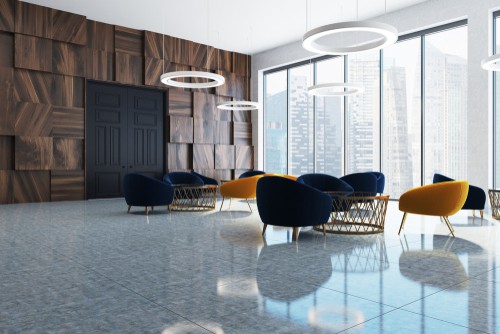
As you can see, there are several types of flooring types for offices that you can use on our workspace to create a conducive atmosphere that is not only appealing but also inviting to your employees and customers.
However, it’s essential to evaluate the pros and cons of each flooring option to determine the most suited for your needs. So, don’t settle on the first flooring type you come across; instead, review them to establish the most appropriate one for your office setting.
